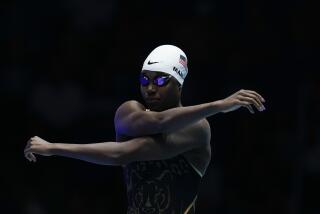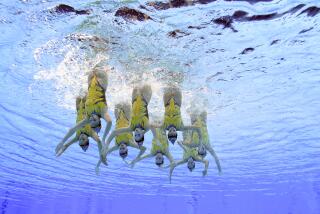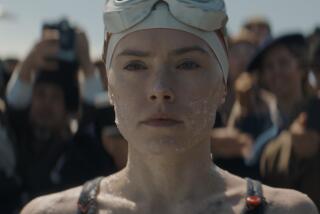The Right Stuff
- Share via
What does it take to make a hero? Lt. Col. Oliver L. North came close, but rapidly dwindling book sales of his reprinted congressional testimony now seem to indicate that he did not make the grade.
Last Friday Lynne Cox became the first person to swim the 2.7 miles of the Bering Strait that separates the United States from the Soviet Union. The Southern California swimmer tackled the icy waterway with its swift and unpredictable currents without wet suit or greased body. Once she crossed the international border, the Soviet navy escorted her to the rocky Siberian shoreline, where she climbed out of the 44-degree water to receive a hero’s welcome.
Cox is not new to distance swimming. In 1972 she swam the English Channel in a record-breaking 9 hours, 57 minutes. She was 16 years old. Her other feats include a 4.5-mile swim across the Strait of Magellan and a 12-mile swim from Denmark to Sweden in the frigid waters between the North Sea and the Baltic Sea.
While athletic excellence is not always a prerequisite for heroism, television hype and large corporate sponsorship seem to be--especially for athletes. But Cox is a dedicated swimmer, and her challenge is a personal one. There is no gold medal waiting for her at the end of her swim.
America depends on the eye of the network television camera to find its heroes, and no doubt will continue to choose from among its well-paid, highly visible baseball and football superstars. Meanwhile, Cox and many other excellent U.S. athletes will quietly prepare for their challenges yet to come. Representing the best American traditions, they may well not qualify as heroes, but merely as legends.
More to Read
Go beyond the scoreboard
Get the latest on L.A.'s teams in the daily Sports Report newsletter.
You may occasionally receive promotional content from the Los Angeles Times.










